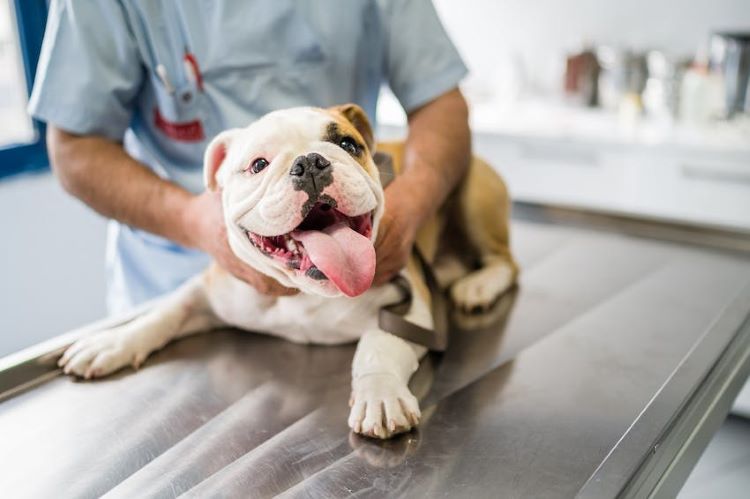Ready to help treat your pet to a healthy life?
8 Things You Didn't Know About Pet Insurance
By : Brianna Gunter | Published Mar 4, 2025

If you have a dog or cat, you may have heard about pet insurance as a way to help with vet bills. But if you’ve never gotten a policy or have only had limited experiences in the past, you may be surprised by how modern pet insurance works and what it can do.
The first thing you need to know is that veterinary care costs can be highly expensive, especially when it comes to surprise injuries and illnesses. Pet insurance is designed to help combat these costs and prevent pet owners from having to choose between their wallet and their pet’s health. Pet insurance is meant to help cover surprises, but the truth is that it can come with a lot of surprises of its own. To make sure you’re making the right decision for your pet and your budget, here are eight things you might not already know about the world of pet insurance today.
1. There are different kinds of pet insurance
If you’re considering pet insurance, it’s a good idea to compare providers and read the fine print so you know what to expect. That said, coverage varies not just between providers, but between types of policies. There are different kinds of pet insurance, and they aren’t all created equal.
For example, some plans are accident-only and cannot be used for illnesses or chronic conditions. Other plans are more comprehensive and are designed to cover both accidents and illnesses, along with other surprise health conditions.
Most surprisingly, some forms of pet coverage aren’t actually “pet insurance” at all. Wellness plans (sometimes called “preventative care” or “pet healthcare” plans) have grown more common over the years as coverage for annual check-ups, parasite control, vaccinations, and other routine care. The caveat of these plans is that they do not cover big-ticket costs like accidents, illnesses, or chronic conditions.
Learn more about different types of pet insurance.
2. It isn’t always called ‘pet insurance’
While pet insurance is the most common term used to describe pet health coverage, it’s far from the only term. Other common ones include:
- Dog insurance
- Cat insurance
- Pet health insurance
- Pet medical insurance
- Pet medical coverage
- Veterinary care insurance
- Animal insurance
- And variations of all of the above!
Again, however, it’s important to realize that there are different types of pet insurance. Some providers and even state regulators may have their own separate definitions of specific terms like pet health insurance vs. medical insurance for pets. Regardless of what you see pet insurance called colloquially (or professionally, for that matter), it’s crucial to read the details to make sure you’re getting the coverage you want.
3. Pet insurance is not a new concept
Many pet parents are surprised to learn pet insurance exists, but the truth is that it’s not a new industry. While it’s certainly grown over the past decade with new companies, some providers have been protecting pets for many years. For example, Trupanion started in 1998 and has been protecting dogs and cats for well over 25 years!
The concept of pet insurance is nevertheless even older than that. Though it was likely discussed as a possibility in the years prior, historical accounts agree that the first-ever pet insurance policy was written for a horse in 1890 in Sweden. While coverage has since grown for pets worldwide, Sweden continues to have one of the biggest protection rates with 90% of dogs and 50% of cats in the country covered today.

4. It’s similar but not the same as human health insurance
Pet insurance is similar to human health insurance in that it steps in to help cover the cost of medical care. And while coverage details vary greatly between providers in both areas, both tend to have things like premiums, deductibles, and caps on how much is paid out (it’s worth noting though that Trupanion does not have payout caps).
That aside, there are some key differences to be aware of. Human health insurance will likewise cover pre-existing conditions in many cases, whereas pet insurance almost universally does not. Pet insurance coverage also tends to focus on new, unexpected health conditions that pet owners can’t already plan for, whereas human health insurance is more all-encompassing. Additionally, most pet insurance companies operate strictly on a reimbursement model, whereas human health insurers pay doctors directly. Only a select few pet insurers are able to pay veterinarians directly.
5. ‘Birthday pricing’ is common
The term “birthday pricing” may sound fun, but the reality is it’s nothing to celebrate. This is a common practice in the pet insurance industry where providers automatically increase their rates just because your pet turns another year older. This form of price increase can happen whether or not you actually used your coverage in the past year, or ever for that matter.
Always read cost details closely, both during signup and upon renewal of your policy. You may find that it’s more worth it to switch to a provider like Trupanion, which does not practice birthday pricing.
6. There are often age limits
Did you know that pet insurance providers have age limits for enrollment? This is because older pets are at higher risk of certain health conditions and therefore tend to come with higher monthly and annual costs. You’re also more likely to get the most value out of a pet insurance policy throughout your pet’s lifetime if you enroll them while they’re still young and at the least risk of having pre-existing conditions.
Still, it’s important to compare providers closely and look at their age limits and exclusions prior to signing up. For example, Healthy Paws won’t cover hip dysplasia for any pet enrolled after the age of 6, and Nationwide, which won’t cover hereditary conditions for cats enrolled after the age of 8.1 Trupanion meanwhile does not limit coverage for older pets and will enroll all new pets up to age 14.
Learn more about the best age to get dog insurance.
7. It’s not just for younger pets
As noted above, pet owners typically get more value out of their coverage by enrolling pets when they are young. However, that does not automatically mean it’s not worth it to enroll older pets. Because providers like Trupanion will cover all new eligible conditions, older pets will still be able to get coverage for anything that isn’t pre-existing.
The choice is still up to the individual pet owner, of course. But considering older dogs and cats are at increased risk of developing serious, life-threatening health issues, many find pet insurance to still be a valuable decision.

8. Pet insurance may cover more than you think
It’s easy to think of things like broken bones and swallowed toys when thinking about pet insurance. But the truth is that it can cover so much more than accidents. And the right plan may end up paying out far more than you expect. From sudden, onset illnesses to long-term chronic conditions and so many things in between, your pet’s health is in good hands with a robust pet insurance policy enabling them to get the coverage they need.
Here are just a few small examples of claims Trupanion has covered for dogs and cats:
- Encephalitis — Trupanion paid $2,520.90 of one pet’s $2,835.00 eligible costs.
- Bloat — Trupanion paid $5,627.46 of one pet’s $7,002.73 eligible costs.
- Brain tumor with seizures — Trupanion paid $9,217.60 of one pet’s $10,241.78 eligible costs.
- Lymphoma — Trupanion paid $16,359.56 of one pet’s $18,681.44 eligible costs.
It’s easy to feel overwhelmed when looking at your pet insurance options, but it’s important to take your time to find the right fit. These pet insurance comparison charts can help.
1Information on Healthy Paws and Nationwide age limits for hip dysplasia coverage and hereditary condition coverage, respectively, is based on written documentation from each of the above companies’ public-facing websites and Policy Wordings as of March 1, 2025. It is our intention at Trupanion to provide fair, accurate, and current comparison information to help consumers on their pet insurance research journey. That said, we acknowledge that coverage details for each provider can change at any time. If you spot any inaccuracies or changes in the information provided above, we invite you to let us know by emailing [email protected].
